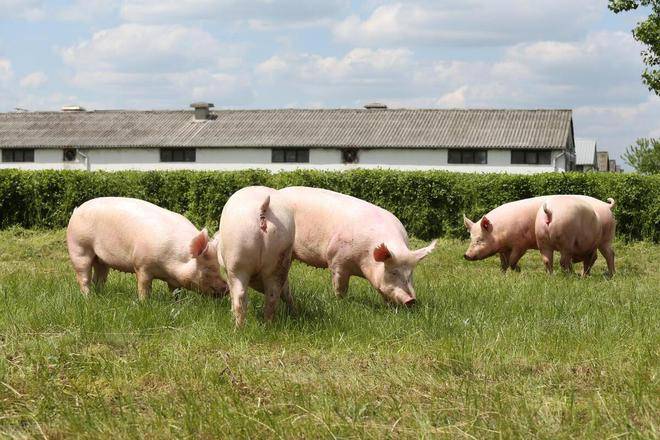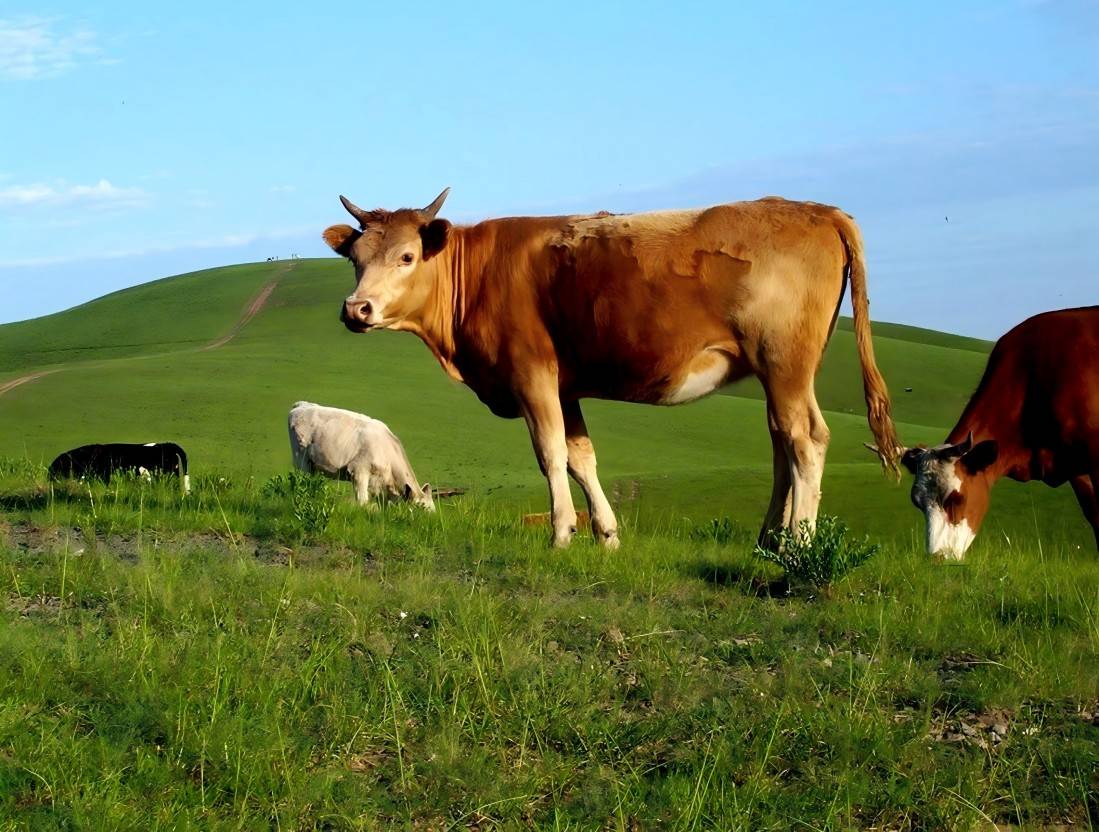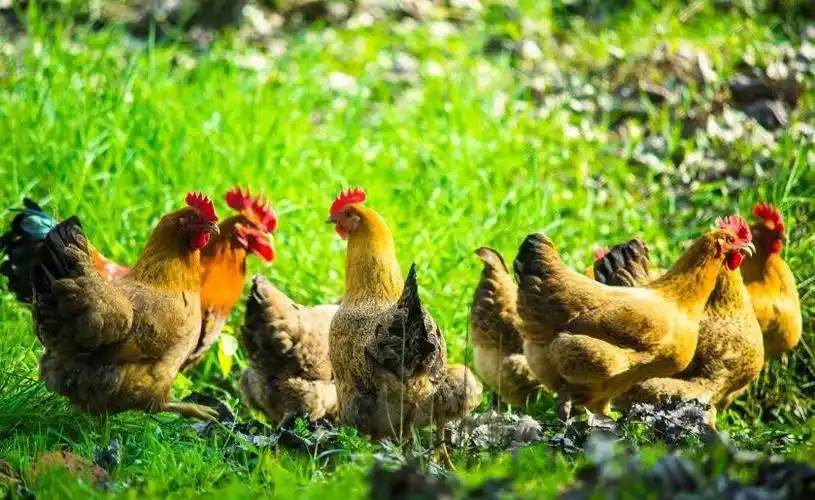How Are Mannan Oligosaccharides(MOS) Used in Animal Feeding?
Mannooligosaccharides (MOS) are phosphorylated glucose-manno-oligosaccharide protein complexes enzymatically extracted from yeast cell walls, which are widely distributed in the cell walls of konjac flour, calla lilies, and a variety of microorganisms (Sohn et al., 2000). MOS has strong biological activities, which can enhance the immunity of animals, maintain intestinal health, regulate sugar and fat metabolism, etc., as well as promote growth and antioxidant effects (Wang et al., 2018; Li Yuxin, 2015). MOS is non-toxic, safe to use, has good physical and chemical properties, and is widely used in animal feed and food (Zhao, 2008). As the Ministry of Agriculture and Rural Development (MARD) continues to promote "antimicrobial-free farming", antibiotics will be completely withdrawn from feed additives by 2020, and the search for safe and effective antibiotic substitutes is a hot research issue in the field of animal husbandry. In this paper, we reviewed the physicochemical properties, physiological functions and regulatory mechanisms of MOS, the research progress in livestock and poultry production, and the influencing factors to provide references for further research.
1 Physicochemical properties of mannan oligosaccharides
MOS, also known as mannan oligosaccharides, are mainly formed by linking mannose molecules or mannose and glucose through glycosidic bonds (Ximei Yao, 2011). In practice, the morphology, structure and physicochemical properties of MOS vary depending on the source of production, and currently the main sources of MOS for feeding are the enzyme degradation product of konjac flour and yeast cell wall extract (Mul et al., 1994).The sweetness of MOS is less than that of sucrose, and it is relatively stable under normal conditions.MOS is water-soluble, easily soluble in water, and can produce precipitation or form crystals with other organic solvents (Liu Qi et al., 2019). MOS is water-soluble, easily soluble in water, and can produce precipitation or form crystals with other organic solvents () MOS is stable in nature and contains stable chemical bonds, so it is difficult to be digested and utilized in the small intestine of animals, and it is selectively fermented and utilized by coliform bacteria after entering the back part of the intestine (Qiru et al., 2011). The rumen microorganisms of ruminants can degrade MOS into volatile fatty acids (VFA) by fermentation, and here, rumen microorganisms can also convert cellulose and hemicellulose into oligosaccharides (Wang et al., 2020).
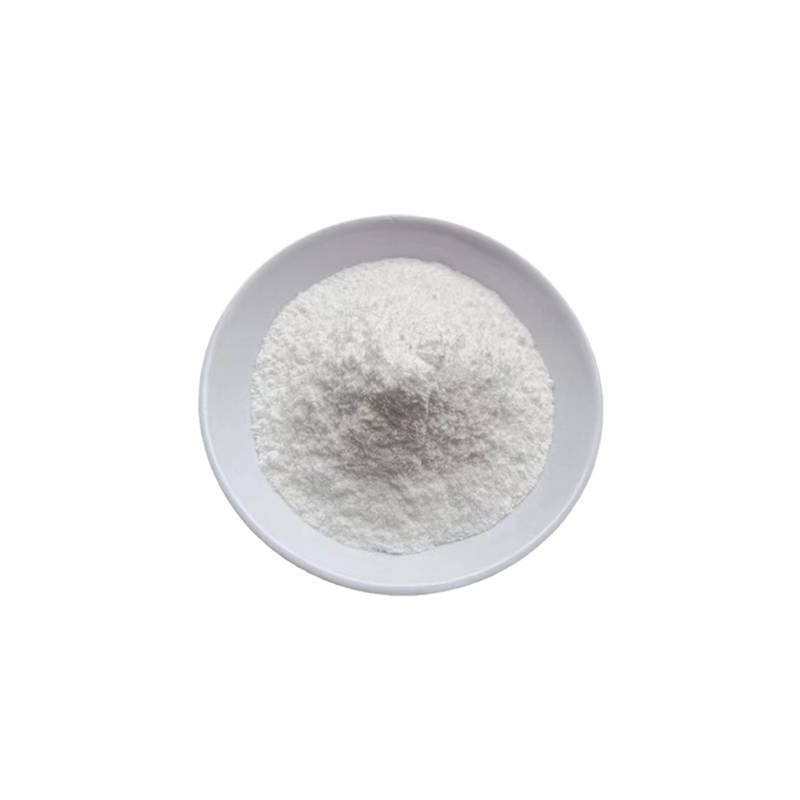
2 Physiological Functions and Regulatory Mechanisms of mannan oligosaccharides
2.1 Regulation of the intestinal microbial environment
In the animal body, the intestinal microflora is in dynamic balance, and studies have shown that MOS can regulate intestinal microorganisms from two main aspects. On the one hand, MOS can promote the growth and reproduction of intestinal beneficial bacteria. Ghasemian et al. (2016) reported that the addition of MOS to diets significantly increased the number of Lactobacillus spp. in the ileum of laying hens, decreased the number of Salmonella spp. in the ileum and reduced the total bacterial count in the ileum. The mechanism of this could be that the ileum flora fermented MOS to produce VFA, which lowered the pH of the ileum, and provided a favorable condition for the proliferation of beneficial bacteria, while effectively inhibiting the proliferation of harmful bacteria. Guedes et al. (2009) showed that the addition of MOS to rabbit feed significantly increased the mass concentration of Lactobacillus and Bifidobacterium in the cecum. On the other hand, MOS can resist the adhesion of harmful bacteria and reduce the colonization of enteropathogenic bacteria. Studies have shown that exogenous lectins on the surface of pathogenic bacteria cells or villi can bind to mannose receptors on the surface of intestinal epithelial cells and colonize the intestinal wall, producing toxins that disrupt the balance of the intestinal flora and become disease-inducing factors (Santos et al., 2007). In addition, MOS favors the formation of lactic acid, which effectively inhibits the propagation of pathogenic bacteria in the intestine by lowering the pH (Hang Suqin, 2007).
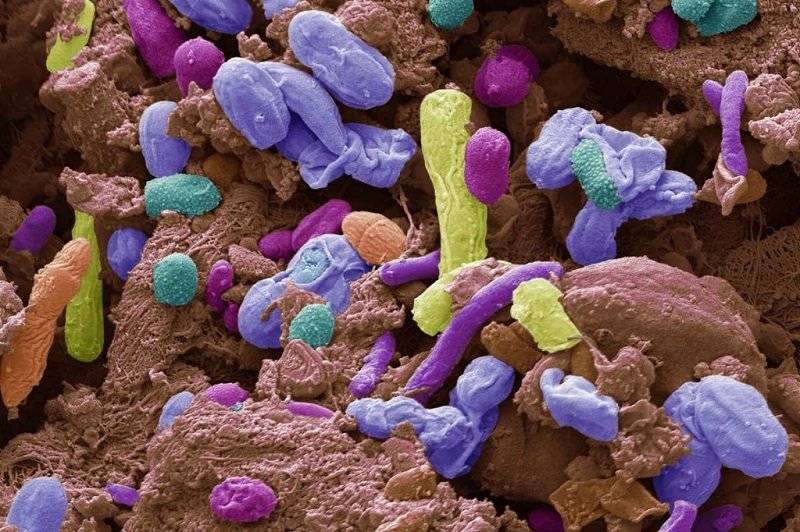
2.2 Improvement of animal immune function
MOS is an antigenically active substance that induces the body to produce an immune response (Li Guohui et al., 2017). Ma Zhihong et al. (2010) conducted a controlled experiment on immunocompromised mice, and the results showed that MOS could enhance the non-specific immunity of mice, and the beneficial bacteria proliferated by MOS could regulate specific and non-specific immunity through the intestinal epithelial cells, which could increase the number of intestinal mature T-cells and the number of peripheral blood CD4+ T lymphocytes and CD4+/CD8+ ( Mahesh et al., 2017), and could also enhance T lymphocytes and B lymphocytes ( Mahesh et al., 2017), and could also enhance T lymphocytes and B lymphocytes ( Mahesh et al., 2017). It can increase the number of mature T cells in the intestines and the number of CD4+T lymphocytes and CD4+/CD8+ in the peripheral blood (Mahesh et al., 2017), and it can also enhance the activity of T lymphocytes and B lymphocytes, and improve the cellular immunity and humoral immunity. Zhou Yinghua et al. (2003) showed that MOS could significantly (P < 0.01) increase the antibody potency and the number of T-lymphocytes in broiler Newcastle disease. It was also shown that MOS had strong anti-inflammatory effects, and Che et al. (2013) found that MOS reduced the inflammatory response in animals.
2.3 Regulating sugar and fat metabolism and improving feed quality
MOS can effectively reduce blood lipid concentration and regulate sugar metabolism. In a study on mice, Wang Hongshan et al. (2018) found that MOS increased the levels of acetic acid, propionic acid, and butyric acid in the large intestine, and hindered weight gain by effectively enhancing lipid metabolism. Qiyu Gao et al. (2012) found that MOS reduced thyroglobulin (TG), blood glucose, and cholesterol levels, and increased high-density lipoprotein cholesterol levels in mice. In addition, MOS was found to be effective in improving feed quality and mitigating the damage caused by mycotoxins and coccidia. On the one hand, MOS can chelate aflatoxins and thus reduce their intestinal damage; on the other hand, MOS can directly bind to mycotoxins and improve feed quality (Zaghinia et al., 2005; Jouany et al., 2005). Shanmu-gasundaram et al. (2013) found that MOS reduced the number of coccidian oocysts in the feces and also increased the expression of IFN-γmRNA after coccidial infection, reducing intestinal mucosal damage.
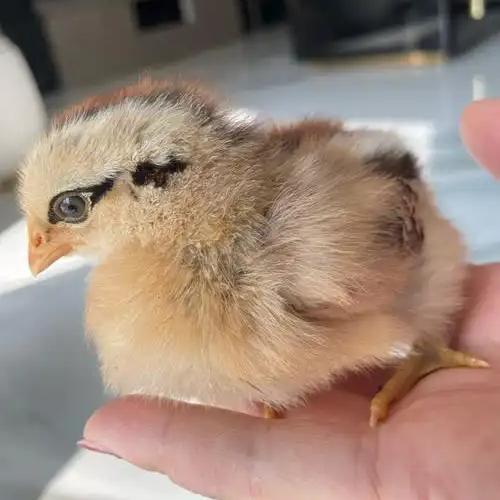
2.4 Improvement of intestinal morphology and structure
Nutrients consumed from outside are mainly absorbed through the small intestine. MOS can change the morphology of the small intestinal mucosa, increase the height and density of the villi, and expand their contact and absorption surface area, which can help the digestion and absorption of nutrients. Shashidhara et al. (2003) found that the increased height and surface area of villi could effectively improve the absorption of trace elements such as zinc, copper and selenium in the small intestine. Meng Yan et al. (2007) added MOS to broiler feed and showed that MOS could improve the height and area of villi, depth of crypts and thickness of mucosa in the small intestine, and promote the digestion and absorption of the small intestine.Hutskosl et al. (2016) found that MOS could promote the development of intestinal cells and the growth of villi, and could effectively alleviate the damage caused by pathogenic bacteria and their toxins to the intestines.Zhang et al. (2012) used MOS in shrimp feed and found that it was effective in enhancing the absorption of trace elements such as zinc, copper, and selenium. Zhang et al. (2012) added MOS to shrimp feed and showed that MOS could effectively promote the development of intestinal microvilli in shrimp. Liu Aijun et al. (2009) studied the effect of MOS on Onirofen, and found that the addition of MOS helped to increase the height, width and density of small intestinal villi, expand the intestinal absorption area, and improve the digestive utilization of nutrients.
3 Application of mannan oligosaccharides in Livestock and Poultry Production
3.1 Application in poultry production
Studies have shown that MOS is widely used in poultry production and can effectively improve poultry performance. Yan Guiling et al. (2008) found that the addition of MOS to broiler diets significantly reduced the number of E. coli and Salmonella in the cecum of broilers (P < 0.05), and improved the immune function of broilers.Ghasemian et al. (2016) reported that the addition of 1000 and 1500 mg/kg- MOS to diets significantly increased egg production rate and FCR of senior laying hens (68 weeks of age) throughout the experimental period. The addition of 1000 and 1500 mg/kg- MOS to the diet significantly increased the egg production rate and FCR of senior laying hens (68 weeks of age) throughout the experimental period, and significantly increased the number of Lactobacillus spp. in the ileum of laying hens, decreased the number of Salmonella spp. in the ileum, and reduced the total ileal bacterial count. Xiong A-Ling (2014) found that the addition of 300, 600, and 900 mg/kg of MOS to broiler diets from 1 to 21 days of age increased ADG and significantly decreased F/G in broilers, and the best results were obtained with the addition of 900 mg/kg of MOS.
3.2 Application in pig production
Currently, the most researched effect is the effect of MOS on piglets, which has been shown to promote growth, enhance animal immunity, improve meat quality and so on. Li Yuxin et al. (2015) reported that adding 1000 and 2000 mg/kg of MOS (Saccharomyces cerevisiae cell wall extract) to the diets of weaned piglets significantly increased the daily weight gain and feed conversion ratio of the test animals, and there was no significant change in feed intake. Duan Xudong (2013) showed that the addition of MOS to piglet diets could help to improve the non-specific immune response of piglets, improve the intestinal micro-ecological environment, and improve the growth performance, and Zhao et al. (2012) showed that the addition of 0.1% MOS to the diets effectively reduced the rate of diarrhea, increased the digestibility of dry matter and nitrogen, and improved the growth performance of weaned piglets.
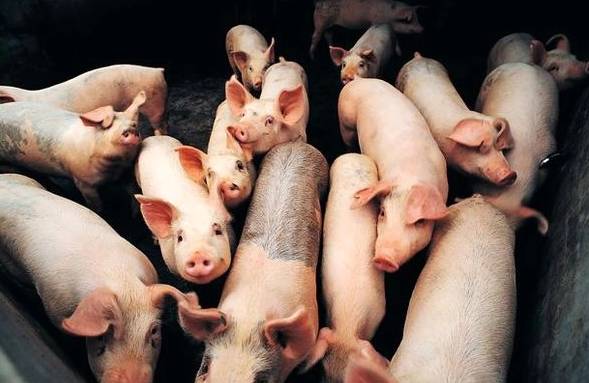
3.3 Application in ruminant production
Due to the special function of the rumen of ruminants, little research has been done on feeding MOS to ruminants. Xiao Yu et al. (2010) found that the addition of MOS to the diets of dairy goats resulted in a decrease in ghrelin activity and serum malondialdehyde, and a significant increase in serum globulin and phosphorus content, which increased the antioxidant capacity of the animals and effectively improved lipid metabolism and protein synthesis. Wang Dingfa et al. (2004) took 5~7 days old calves as the research object, added 1 g MOS per head per day in their drinking milk, and 30 d was a test period. The results showed that each calf in the test group gained 3.66 kg per head compared with that of the control group, and the economic benefit increased by 51.9 yuan; the IgA and IgG in the blood of the calves were increased by 21.6% and 15.4%, respectively (P < 0.05). 0.05).
4 Main factors affecting the effect of mannan oligosaccharides
4.1 Types of Glycoligosaccharides
There are many factors affecting the effects of MOS on animals, among which the type of MOS is one of the most important factors. Due to the complex structure of oligosaccharides, wide range of sources, and different production processes, the effects of MOS produced by different species and different manufacturers vary to a certain extent.
4.2 Dosage of Glycoligosaccharides added
The level of MOS addition also affects its effect, and either insufficient or excessive dosage will not achieve the desired effect. Li et al. (2017) showed that if MOS is not added in a certain proportion, it will not achieve the expected effect; if it is added excessively, it will not only increase the cost of feed, but also cause a decrease in feed intake due to the poor palatability of the feed, and in severe cases, it will also lead to diarrhea in animals.
4.3 Age and health level of animals
Research shows that the intestinal microflora of animals will change with age, such as in the growth process of pigs, weaning piglets is a special stage, E. coli and other pathogenic bacteria concentration rises faster, easy to lead to diarrhea in piglets, in this stage to add a certain concentration of MOS can effectively prevent the occurrence of diarrhea.
In addition, the synergistic effect of MOS with other substances also affects its effect, such as the synergistic effect of oligosaccharides and prebiotics, which can improve the effect (Li et al., 2017; Qi Ru et al., 2011).
5 Summary
As a new type of feed additive, MOS has the functions of regulating the intestinal microbial environment, improving immunity, regulating the metabolism of lipids and sugars, improving the quality of feed and promoting growth. However, further research is needed to study the use and dosage of MOS in different livestock and poultry production. In the future, research should be strengthened on the structure and function of MOS, its production process and the optimal dosage of MOS in different physiological stages of different livestock and poultry, and it is believed that MOS will be more scientifically and widely applied with the deepening of the research.
Reference:
[1] Duan Xudong . Effects of dietary mannan-oligosaccharides on reproductive performance, immune function and offspring growth, immunity and intestinal microorganisms of sows: [Master's thesis][D]. Ya'an: Sichuan Agricultural University, 2013.
[2] Gao Qiyu, Xu Guangcui, Jiang Yuanyuan. Effects of oligosaccharides and chitosan on blood glucose and blood lipids in tetracycline-diabetic mice[J]. Sichuan Animal, 2012, 31(1): 129 ~ 131.
[3] HANG Suqin . Effects of mannan oligosaccharide on intestinal microorganisms of weaned piglets: [Doctoral dissertation][D]. Nanjing: Nanjing Agricultural University, 2007.
[4] LI Guohui, WANG Jinrong, SU Lanli, et al. Research on the application of feed mannan oligosaccharide in animal production[J]. Feed Expo, 2017, 11: 20 ~ 23.
[5] LI Yuxin, ZHANG Limei, HAN Dandan, et al. Effects of Picher yeast mannan oligosaccharide on the intestinal villi and cytokines of weaned piglets' productive performance [J]. Chinese Veterinary Journal , 2015, 51(11): 33 ~ 35.
[6] Li Yuxin . Effects of Picher yeast mannan oligosaccharide on production performance and immune performance of pigs: [Doctoral dissertation][D]. Beijing: China Agricultural University, 2015.
[7] LIANG Yong, LI Biao, DAI Jinjun. Progress in the application of mannan oligosaccharide in feed industry[J]. Feed Research, 2013, 1: 32~33+36.
[8] LIU Aijun, LENG Xiangjun, LI Xiaoqin, et al. Effects of mannan oligosaccharide on the growth, intestinal structure and non-specific immunity of Oniola tilapia[J]. Journal of Zhejiang University: Agriculture and Life Science, 2009, 35(3): 329-336.
[9] LIU Shiqi, HE Yujia, SHEN Yuzheng, et al. Physiological functions of mannan oligosaccharide and its research progress in livestock and poultry production[J]. China Feed, 2019, 17: 8 ~ 15.
[10] MA Zhihong, JIN Jing, LIU Hongmei, et al. Effects of mannan oligosaccharide on growth performance and immune function of carp[J]. Anhui Agricultural Science, 2010, 38(3): 1291 ~ 1292.
[11] MENG Yan , ZHANG Hui . Effects of oligosaccharides on growth performance and intestinal mucosa morphology of broiler chickens [J]. China Feed, 2007, 21:30~32.
[12] QI Ru, LIN Ying Ting . Application of glyco-oligosaccharides in ruminants [J]. China Feed, 2011, 4: 24 ~ 28.
[13] WANG Dingfa, WANG Chunfang, LIU Xiaohua, et al. Repeated experiment on feeding mannan oligosaccharide to calves [J]. Grain and Feed Industry, 2004, 9: 34 ~ 35.
[14] WANG Hongshan, ZHANG Xiaoquan, LI Heng, et al. Beneficial effects of glyco-oligosaccharides in mice on high-fat diet[J]. Food and Fermentation Industry, 2018, 44(11): 63 ~ 68.
[15] WANG Min, PENG Peiyuan, YANG Tai, et al. Mechanisms of mannan oligosaccharides regulation on intestinal health and immunity and its application in livestock and poultry production [J]. China Animal Husbandry and Veterinary Medicine, 2020, 47(2):433~441.
[16] XIAO Yu, LIN Yingting . Effect of mannan oligosaccharide on the immune function of animals[J]. Feed Research, 2010, 7: 27 ~ 28.
[17] Xiong A-Ling . Effects of dietary mannan-oligosaccharides on growth performance and expression of natural immunity-related genes in broiler chickens: a study [Master's thesis][D]. Nanchang: Jiangxi Agricultural University, 2014.
[18] YAN Guiling, YUAN Jianmin, LIANG Yu Ming, et al. Effects of brewer's yeast mannan oligosaccharide on intestinal microorganisms and immune function of broiler chickens [J]. Journal of China Agricultural University , 2008, 13(6): 85 ~ 90.
[19] Yao Ximei. Preparation of konjac glucomannan oligosaccharides by continuous enzyme-membrane coupled reaction: [Master's thesis][D]. Beijing: Chinese Academy of Agricultural Sciences, 2011.
[20] Zhao Xiaofeng . Graft modification and enzymatic preparation of galactomannan oligosaccharides from guar gum: [Master's thesis][D]. Nanning: Guangxi University, 2008.
[21] ZHOU Yinghua, ZHANG Shirui. Effects of Glycoligosaccharides on Productivity, Intestinal Microbiology and Immune Function of Broiler Chickens[J]. Journal of Hunan Agricultural University: Natural Science Edition, 2003, 3: 250~253.
[22] Che T M, Johnson R W, Kelley K W, et al. Mannan oligosac- charide improves immune responses and growth efficiency of nursery pigs experimentally infected with porcine reproductive and respirato ry syndrome virus [J].Journal of Animal Science, 2013, 91 (12): 5668 ~ 5679.
[23] Ghasemian M, Jahanian R. Dietary mannanoligosaccharedes sup- plementation could affect performance, imm -unocompetence, serum lipid metabolites, intestinal bacterial populantions, and ileal nutrient digestibility in aged laying hens [J].Animal Feed Science and Technol - ogy, 2016. 213: 81 ~ 89.
[24] Ghasemian M, Jahanian R. Dietary mannanoligosaccharides sup- plementation could affedt performance, imm- unocompetence, serum lipid metabolites, intestinal bacterial populations, and ileal nutrient di- gestibility in aged laying hens [J].Animal Feed Science and Technolo - gy, 2016. 213: 81 ~ 89.
[25] Guedes C M, Mourao J L, et al. Effects of age and MOS sup- ple-mentation on production of volatile fatty acids in the caecum of rabbits[J]. Animal Feed Science & Technology, 2009, 150 (3):330 ~336.
[26] Hutsko S L, Meizlisch K, Wick M, et al. Early intestinal develop- ment and mucin transcription in the young poult with probiotic and mannan oligosaccharide prebiotic supplementation[J].Poultry Science, 2016, 95( 5): 1173 ~ 1178.
[27] Jouany J P, YiannikouRis A, Beriin G. The chemical bonds be- tween mycotoxins and cell wall components of Saccharomyces cere - visiae have been Identified[J].Archiva Zootechnica, 2005, 8: 26 ~ 50.
[28] Mahesh M, Pawa R, Ashok K, et al. Effect of dietary mannano- ligosaccharide supplementation on nutrient digestibility, hindgut er- mentation, immune response and antioxidant indices in dogs [J].Jour- nal of Animal Science and Technology, 2017, 59: 11.
[29] Mul A J, Perry F G. The role offructo-oligosaccharides in ani- mal nutrition[A].Recent Advances in Animal Nutrition[C].1994.
[30] Santos F S D L, Donoghue A M, Farnell M B, et al. Gastroin- testinal maturation is accelerated in turkey poults supplemented with a annan - oligosaccharide yeast extract (Alphamune) [J].Poultry Sci- ence, 2007, 86(5): 921 ~ 930.
[31] Shanmugasund Ram R, Sif Rim, Selvaraj R K. Effect of yeast cell product supplementation on broiler cecal microflora species and immune responses during an experimental coccidial infection[J].Poul - try Science, 2013, 92(5): 1195 ~ 1201.
[32] Shanmugasund Ram R, Sif Rim, Selvaraj R K. Effect of yeast cell product (CitriStim) supplementation on broiler performance and ntestinal immune cell parameters during an experimental coccidial in - fection [J].Poultry Science, 2013, 92(2): 358 ~ 363.
[33] Shashidha R A R G, Devegowda G. Effect of dietary mannan ligosaccharide on broiler breeder production traits and immunity[J]. Poultry cience, 2003, 82( 8): 1319 ~ 1325.
[34] Sohn K S, Kim M K, Kim J D, et al. The role of immunostimu- lants in monogastric animal and fish review [J]. Asian Australasian Journal of Animal Sciences [J].2000,13(8):1178 ~ 1187.
[35] Wang H, Zhang X, Wang X, et al. Mannan -oligosaccharide modulates the obesity and gut microbiota in high-fat diet-fed mice [J].Food Funct, 2018, 9: 3906 ~ 3915.
[36] Zaghini A, Martelli G, Roncad P, et al. Mannanoligosaccharides and aflatoxin B1 in feed for laying hens: effects on egg quality, afla- toxins B1 and M1 residues in eggs, and aflatoxin B1 levels in liver[J]. Poultry Science, 2005, 84( 6): 825 ~ 832.
[37] Zhang J, Liu Y, Tian L, et al. Effects of dietary mannan oligosac charide on growth performance, gut morphology and stress toler?ance of juvenile Pacific white shrimp, Litopenaeus vannamei [J].Fish & Shellfish Immunology, 2012, 33(4): 1027 ~ 1032.
[38] Zhao P Y, Jung J H, Kim I H. Effect of mannan oligosaccharides and fructan on growth performance, nutrient digestibility, blood pro- file, and diarrhea score in weanling pigs[J].Journal of Animal Science, 2012, 90(3):833.


 English
English French
French Spanish
Spanish Russian
Russian Korean
Korean Japanese
Japanese